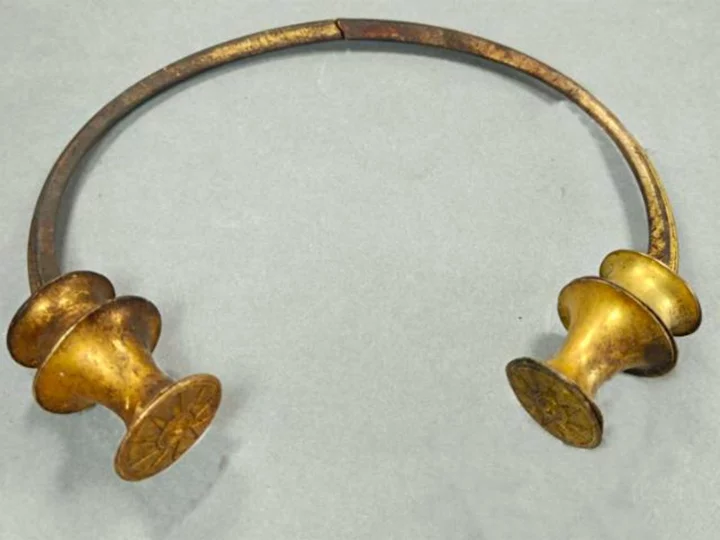Two gold necklaces dating from around 2,500 years ago have been found by chance in northwestern Spain by a worker for a local water company.
Sergio Marciandi was working in Cavandi, Asturias, on August 29 when he spotted a gold necklace among some rocks.
He got word to Pablo Arias, a professor of prehistoric archeology at the University of Cantabria, who recounted the story of the find to CNN on Wednesday.
Arias traveled to the scene along with experts from the Asturias Archaeological Museum and carried out an initial investigation, which uncovered a second necklace that had been broken into several pieces, he said.
"It's really impressive," said Arias, who added that the find could boost our understanding of the Iron Age, the period in which they were made.
While other gold necklaces from the Iron Age have been found, most were discovered in the 18th and 19th centuries, when limited archaeological techniques meant much of the information about their provenance was lost, Arias explained.
In this case, the site is intact, giving archaeologists a much better idea of their context, he added.
"We have very precise information about where they were found," said Arias. "It's quite exceptional."
The discovery opens up many potential fields of study, he said, which could shed new light on a period about which little is known.
As things stand, the necklaces show signs of wear on areas that would have been in contact with the wearer's skin and clothes.
"We know that they were used," said Arias.
Necklaces of this kind were associated with the upper echelons of society, he added, explaining: "Not everyone could afford one of these necklaces."
Dating the objects is difficult, but Arias believes they are unlikely to be more than 2,500 years old.
The regional government in Asturias praised Marciandi for informing officials of the find straight away, and said in a statement Sunday that the find was "an extraordinary development considering their quality and the skill of the artisans that made them, and most of all for opening a window to the study and knowledge of the most emblematic type of jewelry of Iron Age gold work, which until now had been closed."

